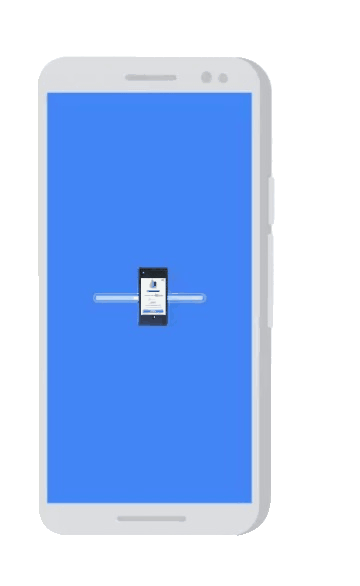Inspironlabs | 11 July, 2020
What is Mobile Marketing and Advertising
Written by Sachin Shetty
Mobile Marketing Defined:
With the rapid development of mobile internet technology all over the world, mobile devices are certainly having a lasting impact on the way we communicate with individuals and organizations. The main element which is making mobile technology a key player in marketing is that the tremendous growth of computing power in our mobile devices. Its no longer treated as a device meant only for communication but also as an alternative to a personal computer.
The Mobile Marketing Association defines Mobile Marketing as “a set of practices that enable organizations to communicate and engage with their target audience in an interactive and relevant manner through and with any mobile device or network.”
With a ton of recent innovations in technology, our mobile devices have enabled us to do things that never seem to be reality a decade before. We all know the fact of the matter is that it will continue to amaze us to do new things that we cannot currently imagine.
In the present era of competitiveness, any marketing strategy needs to put forward its product or service to the right customer at the right time in the right place. The growing popularity of mobile devices only suggests to us that its the place no marketeer wants to miss a chance to reach the target audience.
Let us see some of the way’s companies are communicating with their existing and new customer by using the power of mobile marketing.

Applications of Mobile Marketing and Advertising.
1. Mobile Messaging
Short Messaging Service (SMS) allows a mobile user to send a message containing 160 characters. Companies often collect the phone number of their customers during a purchase or a sign up to a service. Existing customers receive communication as a reminder to renew a subscription or motivate a customer to make a repeat purchase.

According to marketing philosophy acquiring a new customer is four times expensive than retaining an existing one. Organizations also run SMS campaigns to acquire new customers who have shown behavioural interest in the type of product or service offered by the companies.
2. Push Notifications
Push Notifications allow companies to send message directly to their customer who has installed the app. It enables the company to engage with its best, connected, and active customers anywhere and anytime. The app need not be open for the ads to be displayed. Companies must be careful with the frequency of these ads shown as it may annoy the customer if done out of proportion.

- Customers should have an option to choose a time in the app for not receiving any marketing messages.
- Engage the customer with a relevant message. It does not make sense to send a marketing message of a product or service which the customer has already bought.
- Give the freedom to the people to personalize their experience.
- The marketing message should be consistent with the brand and the core offering of products or services.
- Keep improvising the marketing message and should not be repeating on automation. Pay attention to the words that can compel the app user to act.
- Be specific on the value the customer gets after reading the message. It should be in terms of discounts or coupon codes by which the customer can benefit.
- Keep the users' best interest in the mind first and then motivate the customer to purchase. It is because the customer has opted in to receive a marketing message in which case trust has to preserved for better customer loyalty.
3. Location-based marketing
Some companies use the location feature in the customer's mobile to show a relevant product or service. Based on the customer's location, apps can suggest the nearest place offering good deals on products or services. It is popular when a customer is specific on a service or is looking for a list of choices he can make in a small radius.

4. Social Media
It is a well-known fact that most of the people who have user accounts in various social media channels access it using their mobile phones. All the major social media channels have verified this fact using the data about user engagement.

5. In-App Advertising
Companies buy ad spaces in mobile apps to showcase their product and services. The cost of the ad spaces depends on the type of ad format chosen by the companies. One such popular vendor to display such ads is AdMob from Google ad network. AdMob has a database of millions of advertisers who are willing to bid to place their advertisement in your app. The advertisers are billed based on the different revenue models of AdMob.Some ad formats. The app owners should combine their app advertising spaces with other revenue sources like in-app purchases to create multiple sources of revenue.
Some of the popular ad formats are
1. Rewarded Ads
Users see advertisements in exchange for a reward. The user is motivated to view rewarded ads in a fixed interval of time. This format works well in the gaming apps where the user is served with an advertisement in exchange for an extra life or collects chips that would otherwise demand payment in money.

2. Native Ads
Users see a customized advertisement that looks like a part of the content in the app. The concept of Native ads is to place the ads in the most unobstructed manner and natively fit the theme of the app. This format works well in social media and news-based apps.
3. Banner Ads
Advertisers use the top and bottom spaces of apps to display their offerings to the target audience. This kind of ad formats come under different cost models. Some of the companies choose to pay for the total number of impressions to reach a wider audience. Some companies choose to pay based on the action taken after seeing the advertisement. The advertiser is billed based on his willingness to bid for a higher price for each click.
4. Interstitial Ads
Users see a full-screen static or video ads at certain breaks or after a fixed interval of time. The advertisers enjoy the full attention of the user as it covers the entire screen. However, the ad should also accompany an easy to see exit icon for the user to continue the activity in the app. Overuse of Interstitial ads can also annoy the user if the content is not relevant to the theme of the app. Hence using third party networks like AdMob helps the app owners to serve relevant ads to keep the user experience intact.

It is fruitful to understand that creating apps is a serious business and if done well can reap in a lot of money and fame. Advertisers should realize that the primary purpose of the app should be creating good user engagement. Marketing messages should be delivered in a natural way of conversation and should further enhance the user experience in terms of offering value in exchange for the customer's attention.
A mobile marketing strategy requires understanding the business objectives you are trying to achieve, determining which marketing tactics you will use to achieve those objectives, and measuring those tactics to see what works. A mobile marketing strategy cannot be implemented successfully without being integrated into a multichannel marketing plan.
 +91-789-269-7903
+91-789-269-7903 +1-206-922-2057
+1-206-922-2057


